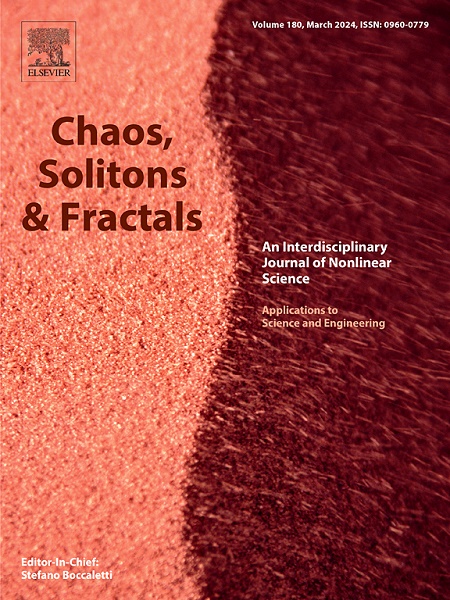The influence of higher-order structure on the synchronization path of the network
IF 5.3
1区 数学
Q1 MATHEMATICS, INTERDISCIPLINARY APPLICATIONS
引用次数: 0
Abstract
The influence of higher-order structures on network dynamic behaviors has gradually emerged as a significant focus in the field of network science. Among these behaviors, synchronization is a pivotal phenomenon. While existing studies primarily examine how higher-order structures affect synchronization types and thresholds, the dynamics of the synchronization process itself remain underexplored. In this work, we study the impact of higher-order BA network structures on ER random networks, specifically analyzing their effect on the synchronization path. Our findings reveal that introducing higher-order BA structures into ER random networks can either promote stepwise aggregation synchronization and hierarchical synchronization or suppress global synchronization, depending on the higher-order coupling strength. Moreover, as the higher-order coupling strength increases, when the higher-order BA network fails to synchronize, the ER structure can be employed to facilitate overall synchronization along the hierarchical synchronization path. The analysis presented in this paper reveals the complex influence of higher-order BA structures on network synchronization, offering new insights into the role of higher-order structures in network dynamics.
求助全文
约1分钟内获得全文
求助全文
来源期刊

Chaos Solitons & Fractals
物理-数学跨学科应用
CiteScore
13.20
自引率
10.30%
发文量
1087
审稿时长
9 months
期刊介绍:
Chaos, Solitons & Fractals strives to establish itself as a premier journal in the interdisciplinary realm of Nonlinear Science, Non-equilibrium, and Complex Phenomena. It welcomes submissions covering a broad spectrum of topics within this field, including dynamics, non-equilibrium processes in physics, chemistry, and geophysics, complex matter and networks, mathematical models, computational biology, applications to quantum and mesoscopic phenomena, fluctuations and random processes, self-organization, and social phenomena.
 求助内容:
求助内容: 应助结果提醒方式:
应助结果提醒方式:


